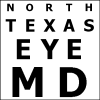Multiple Sclerosis
Multiple sclerosis (MS) is an autoimmune disease that causes your body to produce antibodies that mistakenly attack the myelin sheath protecting your nerve tissue. This chronic central nervous system disorder damages the nerves and causes the gradual loss of muscle control, strength, and vision.
MS affects people differently. Some have only mild symptoms, while others are severely debilitated by the disease. Symptoms of MS vary widely and can include the following:
- Numbness, tingling, or weakness in the arms and legs
- Loss of some or all vision, usually affecting one eye at a time
- Double vision
- Blurred vision
- Pain, including eye pain
- Tremors
- Coordination difficulties
- Dizziness
If you are experiencing any of these symptoms, it is important to see your doctor immediately. To determine if you have MS, your doctor will take a complete medical history, and you will be given a neurological examination. You might also need an MRI and other tests to diagnose the cause of your symptoms.
Should your doctor confirm that you have MS, there are a number of treatment options. If your symptoms are mild or infrequent, you may require no treatment other than careful monitoring. For more serious cases, there are several medications that can help, as can physical therapy, occupational therapy, and other treatments.
Though there is no cure for multiple sclerosis, the major causes of vision problems associated with the disease are all treatable, and they often resolve on their own. Three common visual problems associated with MS are:
- Optic neuritis, or inflammation of the optic nerve, causing blurring, pain, and blind spots, etc.
- Diplopia, or double vision
- Nystagmus, or involuntary movement of the eyes
Steroid medications are commonly prescribed for all three conditions. Patching, prism eyeglasses, and perhaps surgery are also effective in treating double vision. Nystagmus may respond to some medications other than steroids, as well. Over time, your brain may adjust to the appearance of black spots and wiggly lines associated with nystagmus, restoring much of your normal vision.
